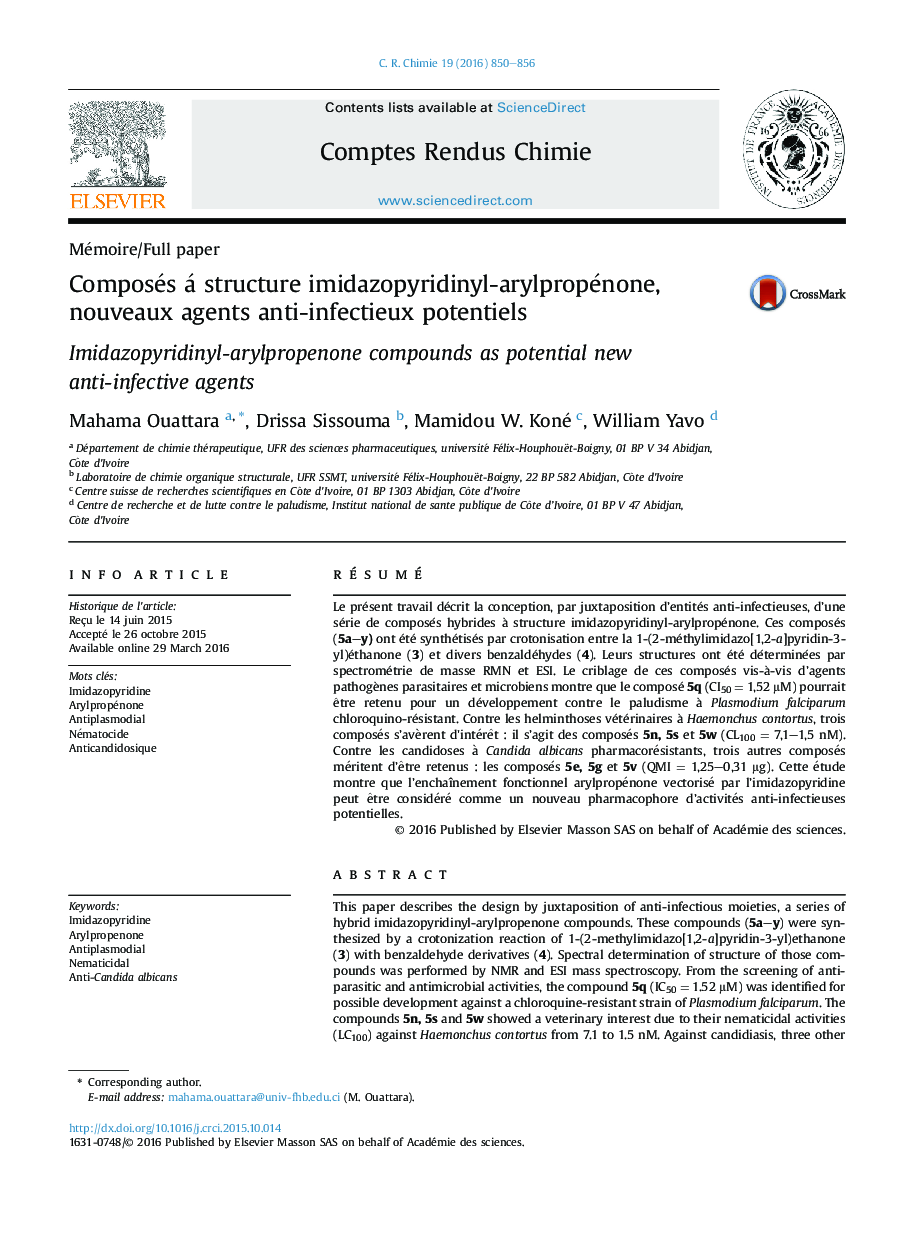| Article ID | Journal | Published Year | Pages | File Type |
|---|---|---|---|---|
| 6468845 | Comptes Rendus Chimie | 2016 | 7 Pages |
RésuméLe présent travail décrit la conception, par juxtaposition d'entités anti-infectieuses, d'une série de composés hybrides à structure imidazopyridinyl-arylpropénone. Ces composés (5a-y) ont été synthétisés par crotonisation entre la 1-(2-méthylimidazo[1,2-a]pyridin-3-yl)éthanone (3) et divers benzaldéhydes (4). Leurs structures ont été déterminées par spectrométrie de masse RMN et ESI. Le criblage de ces composés vis-à -vis d'agents pathogènes parasitaires et microbiens montre que le composé 5q (CI50 = 1,52 μM) pourrait être retenu pour un développement contre le paludisme à Plasmodium falciparum chloroquino-résistant. Contre les helminthoses vétérinaires à Haemonchus contortus, trois composés s'avèrent d'intérêt : il s'agit des composés 5n, 5s et 5w (CL100 = 7,1-1,5 nM). Contre les candidoses à Candida albicans pharmacorésistants, trois autres composés méritent d'être retenus : les composés 5e, 5g et 5v (QMI = 1,25-0,31 μg). Cette étude montre que l'enchaînement fonctionnel arylpropénone vectorisé par l'imidazopyridine peut être considéré comme un nouveau pharmacophore d'activités anti-infectieuses potentielles.
This paper describes the design by juxtaposition of anti-infectious moieties, a series of hybrid imidazopyridinyl-arylpropenone compounds. These compounds (5a-y) were synthesized by a crotonization reaction of 1-(2-methylimidazo[1,2-a]pyridin-3-yl)ethanone (3) with benzaldehyde derivatives (4). Spectral determination of structure of those compounds was performed by NMR and ESI mass spectroscopy. From the screening of antiparasitic and antimicrobial activities, the compound 5q (IC50 = 1.52 μM) was identified for possible development against a chloroquine-resistant strain of Plasmodium falciparum. The compounds 5n, 5s and 5w showed a veterinary interest due to their nematicidal activities (LC100) against Haemonchus contortus from 7.1 to 1.5 nM. Against candidiasis, three other compounds (5e, 5g, 5v) inhibited drug-resistant strains of Candida albicans (MIQ = 1.25 to 0.31 μg). This study showed that the arylpropenone functional group vectorised by imidazopyridine could be considered as a new pharmacophore with potential anti-infectious activities.
